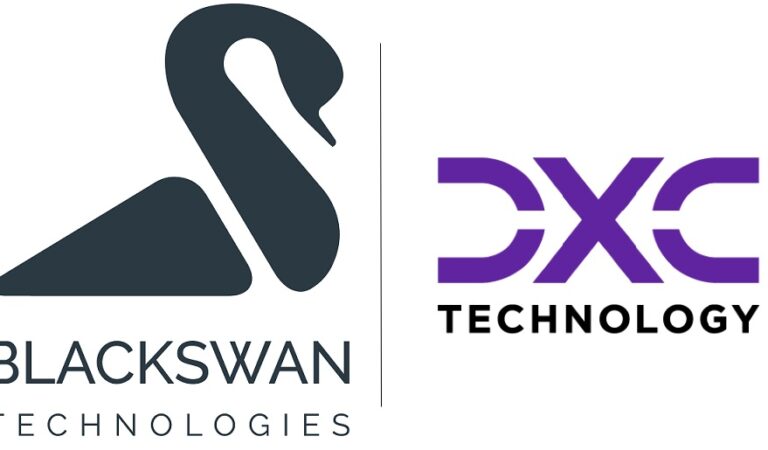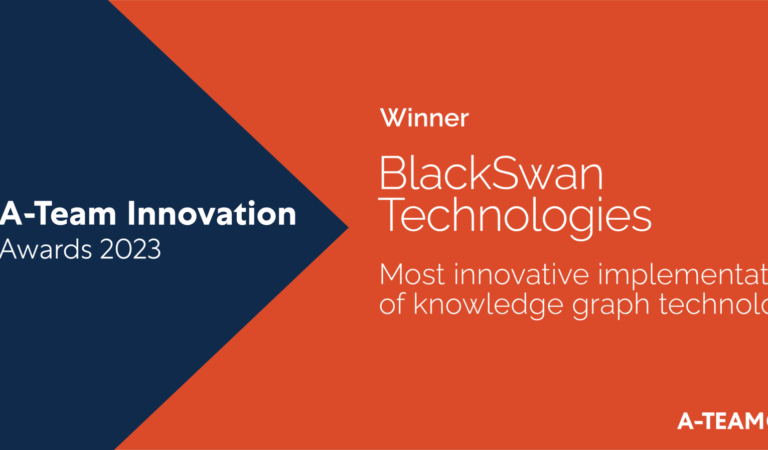
Feb. 26, 2021
Building a ‘Composable Business’ with Enterprise Software 4.0
By Scott Lichtman @BlackSwan Technologies
Something fundamental about business has become clear over the “year of the pandemic.” The need to adapt to changing market conditions had already demanded faster innovation and focused intensity. Yet, 2020 and early 2021 crystallised the need to pivot nearly instantly, and 120% intensity was the only effective response to fundamental threats to business survival.
The Foundations of a “Composable Business”
In this context of constant, disruptive change, the four strategic principles of running a “composable business” have become essential for an adaptable organisation in 2021. From a business perspective, these principles are:
- Modularity – treating the functions in a business as flexible, plug-and-play components that can be reorganised to create new services, products and business processes.
- Autonomy – giving a department the latitude to achieve its strategic goals and operate independently of its primary infrastructure and support providers; for example, supporting work-from-home or swapping component suppliers.
- Orchestration – nimble coordination of resources, e.g. cross-functional design thinking teams, with a moderate degree of formalisation through responsibility definitions and workflows.
- Discovery – automating connectivity to resources, especially information and expertise, shared across a business so that the entire capabilities of the organisation can be brought to bear on any problem. Automation of discovery magnifies the strengths of the organisation. One’s teams would be able to leverage these resources to identify new opportunities and risks as they emerge.
The dramatic promise of the Composable Business has been highlighted by authorities ranging from Gartner to the CTO of Warner Music. The benefits of its adaptable, building block construction (i.e., modularity, autonomy) include enabling rapid development of new products and outsourcing activities to achieve best practices and cost savings across providers, without losing overall control. Meanwhile, the coordination pillars of the approach (discovery, orchestration) facilitate expanding customer touchpoints while retaining a consolidated view and personalised treatment of each customer. Furthermore, they increase the ability to monetise information through more insightful decision-making.
Composable enterprises must involve both business and technical teams to achieve the organisation’s transformational goals. Below, we explore the intersection of these two groups, where enterprise software can provide the framework for innovation across all operations.
Enterprise Software 4.0
First, a brief review of the state of Enterprise Software is in order. Our contention is that business is on the edge of a new phase of enterprise software design. Earlier stages relied on imposing a fixed structure around data with pre-defined user screens and workflows; next introducing a polished, multi-channel user experience for front office applications; and subsequently deploying in the cloud for greater scalability and easier management. There also have been early steps towards using APIs for more agile connectivity and big data for analytics, but these tend to be limited in scope or siloed when embedded in an organisation’s enterprise software.
Despite the significant gains made, there remains structural rigidity and compartmentalised decision-making embedded in most mainstay enterprise software. It is holding organisations back from new degrees of agility and intelligence-driven actions. This is where the need for Enterprise Software 4.0 (we’ll abbreviate the trend as ‘ES4’) arises. ES4 supports the capabilities required for a Composable Business. Let’s look at these now, namely: modularity, autonomy, orchestration, and discovery.
Modularity. Enterprise software commonly is perceived as monolithic. Granted, there are modules one can choose to adopt, but within the modules, the functionality is pre-defined and tightly intertwined. The challenge is that modularisation is valuable at multiple levels of granularity:
| Level of Modularity | Example |
| Business Process | Plug in a modern accounts receivable process that predicts payments overdue based on market and vendor conditions, and that can outsource more challenging collections to a third party |
| Analytic Model | Optimise choice of supplier for an order’s components |
| Point Function | Calculate taxes or shipping due with an international order by accessing a specialised global calculator function |
| Micro Service | Validate customer identity upon log-in |
A modern enterprise software architecture is designed to be modular at each of these levels. It is able to integrate a wholly new business process through data integration and APIs; allow for rapid selection, training and comparison among analytical and AI models; leverage available point functions available on one’s platform and in public marketplaces; and enable the development and repurposing of microservices in a Function-as-a-Service cloud environment.
Autonomy. To support business unit autonomy, the ability to reconfigure interactions with other business units and their technologies must be kept efficient, with a minimum of entangled interdependencies. One’s software logic needs to be well encapsulated with a rich set of APIs. In addition, the development of new functionality must be fast and driven by the business, not bottlenecked by IT. When adoption grows quickly, an application should be easily scalable.
Orchestration. To complement the modularity and autonomy of a composable business, overarching strategic coherence and operational controls need to be introduced. Orchestration therefore entails transfer-of-control rules and event/outlier-triggered alerts, which should be definable by business users without any coding, to ensure timely interpretation and response to new information.
Discovery. With the proliferation of data across corporate systems, public sources and third-party repositories, manually cataloguing and connecting to each source has become simply infeasible. ES4 needs to be able to automatically search for public sources of data and inventory all available data in a catalogue.
Next, to publish this catalogue and facilitate data access to other resources, ES4 needs to represent all that information in a human- and system-interpretable meta-framework. A knowledge graph is well suited to this representation, as it captures the real-world meaning of concepts and relationships. For example, the graph might represent how outdoor temperature is related to risks of delays in supply chain deliveries. This is a far more malleable and potent method of documenting available information, compared to the more traditional catalogues of data fields, tables and repositories. An ES4 platform should possess strong native support for knowledge graphs.
For a composable business to thrive, it needs to be exceptionally quick in identifying emerging opportunities and risks and unusually creative in crafting new solutions to these trends. An integrated data visualisation toolset is an efficient way to monitor organisational health and market trends. It combines well with case-specific dashboards and expandable reports; together, these discovery tools promote holistic thinking at macro- and micro-levels. Meanwhile, rules-based and machine learning-driven alerts guide one’s staff to the most urgent issues and opportunities to address. Indeed, a fundamental goal of ES4 is to free up talented staff from repetitive data analysis and to apply them to higher-level decision-making and innovation.
Finally, by including role-based, need-to-know-basis security protocols and data auditing in an ES4 platform, one can confidently establish the foundation for awareness-sharing across departments and partner organisations.
ELEMENT for a Composable Business using Enterprise Software 4.0
BlackSwan Technologies formally launched ELEMENT™, AI-powered enterprise software 4.0, in 2020, after several years of development and commercial validation with leading global brands. It is a PaaS/SaaS platform for the development of enterprise-wide software capabilities and applications, with best-in-class features to underpin a composable business strategy.
A selection of its features demonstrates how ELEMENT provides this support:
- Modularity
- Swappable AI modelling strategies and goal setting.
- Cognitive computing capabilities available as microservices (NLP, clustering, anomaly detection, sentiment, fact extraction, classification).
- Distinct technology layers for data connectivity, knowledge representation, insight extraction, and application customisation, to facilitate efficient repurposing of capabilities.
- A foundation technology stack layer, known as the Cloud AI Operating System or CAIOS, that is an order of magnitude more efficient than existing cloud tools at developing and optimising microservices.
- Autonomy
- Case management dashboard provides a unified view of enterprise-wide knowledge and activity surrounding a customer or situation, combined with AI-driven recommendations for decisions and next steps.
- Low/no-code development of applications – including data connections, decision-making analytics and AI, flow logic, insight visualisation – means that proofs of entirely new software concepts can be completed in days.
- Orchestration
- A “federated” knowledge graph model allows the entire organisation to share an understanding of one’s business environment, while permitting each department to overlay its own view.
- Events, rules and AI insights can trigger alerts and initiate workflows that route cases to the most relevant roles to address the situation.
- Management Hub centralises access privileges, system governance, and overall orchestration.
- Discovery
- Automated connectivity to and cataloguing of structured and unstructured data sources. Data is accessed from its original source, rather than copied and reformatted, for more effective curation and continuous intake.
- Advanced data visualisation for the instantaneous assessment of the overall situation and data browsing to understand the situation at a detailed level.
| Composable Business Principle | ELEMENT™ Capability Highlights |
| Modularity | Market monitoring of vendors and partners to achieve value chain flexibility
A catalogue of 100s self-sufficient business atoms, which any two or more can seamlessly be integrated to create a higher value “Composite AI” provides multiple cognitive computing services that can be recombined to address different intelligence goals |
| Autonomy | Case management dashboard provides a unified view of all activity around a customer or situation
Low/no-code development facilitates proof of concepts in just days |
| Orchestration | Federated knowledge graph shares and tailors worldview across departments or partnering organisations
Alerts and workflows route processing and special situation handling |
| Discovery | Automated connectivity to unlimited internal and external data sources in any format
Advanced data visualisation including Visual Link Analysis |
Applying a Composable Business Strategy across Industries
Let’s now explore how organisations across a range of industries can apply a composable business strategy to their functions using ELEMENT.
Modularity Examples
- Supplier screening and monitoring. From a value chain perspective, modularity infers the ability to swap in or out vendors to meet current needs. For example, market or regulatory shifts may suddenly make it difficult to work with vendors from a certain country, requiring a shift in providers. ELEMENT’s data connectivity and AI-based information contextualisation enable a company to sift through all relevant factors about vendors’ financial and legal health, capabilities, and business reputation, making vendor selection and substitution decisions more systematic.
- Social listening. Tuning in to the voice of one’s target audience is key to understanding and catering to their needs. ELEMENT enables business units to listen to their target audience by monitoring conversations in the public domain and combining them with internally-captured dialogue such as customer emails or phone transcripts. Then, it uses Composite AI – combining natural language processing (NLP), machine learning (ML), and link analysis – to interpret this information. Social listening is an example of modularity, in that different departments can combine the capability with different intelligence processing for tailored purposes. For example, the marketing department may adopt it to build customer profiles by leveraging NLP; the HR department, to source the right candidates using ML; and the finance department, to detect fraud using link analysis.
Autonomy Examples
- Continuous alignment. Tracking key performance indicators (KPIs) is key to monitoring progress and realising strategic goals. ELEMENT allows analysts and decision-makers within business units to customise dashboards to track operational and analytical data against a pre-defined set of thresholds derived from the overall organisation’s goals. This allows them to remain aligned strategically. Continuous alignment can apply to explicitly linked departments, such as marketing and sales, or more implicitly dependent teams, such as HR and operations.
- Customer service case management. The big picture view, combined with deep-dive analysis, promotes holistic thinking at macro- and micro-levels. This is especially true in customer service situations. ELEMENT allows analysts and decision-makers to visualise data from customer and case dashboards and to alternate between big picture analysis and deep-dives into specific situations. The customisable data visualisation layouts provide instant feedback on an overall situation, and through AI-driven analysis, the platform automatically generates more precise and timely recommendations and strategic insights, increasing customer satisfaction and profitability.
Orchestration Examples
- Cross-organisation collaboration. Collaboration between departments or with external organisations extends the impact of intelligence-gathering, creating fresh perspectives and synergies. For example, a national security/law enforcement agency can share access to its knowledge graph – representing facts, individuals, actions, and their relationships – with other local and global agencies. Each agency can then federate its internal data assets with that knowledge graph under its own custom representation of the world, using ELEMENT. In a private sector example, ELEMENT enables insurance companies to extend cyber-insurance intelligence to their brokers through a portal. This information hub provides the brokers with the latest information on the types of cyber-threats, as well as recommendations for actions to take or coverage to add to the policy. This collaborative approach leverages a company’s existing channel strengths.
- Automation. A composable business/orchestration premise is that “anything that can be automated, should be.” Automating time-intensive tasks allows staff to focus more on opportunities and challenges that need more creativity. ELEMENT accomplishes this with small business loans and insurance underwriting by automatically enriching profiles of parties using information from multiple public sources, with the parties’ permission. It also automates interactions with clients through a questionnaire builder, which optimises the sequence of queries to gather all required information from prospects and customers. Then, the platform compiles all gathered information using natural language processing and entity resolution, rationalising ambiguous data that correspond to real-world entities.
Discovery Examples
- Discovering information assets. ELEMENT automatically searches for public sources of data and inventories all available data in a catalogue. It contextualises and categorises the gathered information by topic, entity, and relationships to other parties, using natural language processing. ELEMENT maintains a live view of all relevant information consolidated into a single source of truth, by accessing the data where it lives. As a result, the platform processes all queries with up-to-the-second values, providing real-time information retrieval. This is particularly beneficial when building customer profiles or performing KYC due diligence.
- Uncovering opportunities. Organisations are missing out on promising opportunities due to the limited ability of their existing data processing systems. ELEMENT resolves this issue by enabling teams to identify new opportunities as they emerge and creatively craft solutions to these trends. It harnesses data using machine learning and data visualisation to reveal non-obvious relationships and to detect overlooked and far-reaching opportunities. For example, the platform uses incremental learning to continually analyse customer information, such as social behaviours and demographics, and discover cross-sale and up-sale opportunities.
Conclusion
The composable business is a relatively fresh concept from an organisational standpoint. Composability has long-standing parallels in the technology world, including fourth-generation languages, APIs, data warehouses, app marketplaces and DevOps. However, the increasing pace of innovation plus the urgency of business pivots due to the COVID-19 pandemic have made linking business and technological flexibility a top priority.
The latest enterprise software 4.0, incorporating leading-edge AI, provides a comprehensive platform for business organisations to achieve these goals, while bringing customer-centric solutions to market and saving dramatically on operating and capital costs. As it is quick to prototype and deploy, it is worth evaluating now.
We are ready to collaborate with you and discuss how ELEMENT would fit into your Composable Business plans. Contact BlackSwan Technologies to set up a discussion and demonstration.

Scott Lichtman is a Marketing Director at BlackSwan Technologies. He has worked in strategy at Oracle and has helped lead numerous startups. Scott holds a computer science degree from MIT, an MBA from Harvard and a Masters in International Economics from LSE.
Learn more about BlackSwan Technologies at blackswantechnologies.ai or follow us on Twitter and LinkedIn


